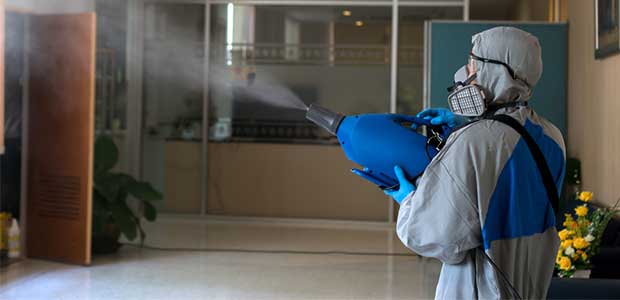
Shrinking the Space: Small Steps for COVID-19 Control
As employees are coming back to the workplace, it’s important to keep in mind there is a lot a business can do to help prevent the spread of the disease.
- By Chad Rissanen
- May 11, 2021
As employees are coming back to the workplace, it’s important to keep in mind there is a lot a business can do to help prevent the spread of the disease.
As workplaces re-open their doors after a year of uncertainty, drawing up an actionable post-COVID-19 game plan can seem like a daunting task. Amidst the ever-present threat of a viral breakout, which has the potential to start with a single infected employee, getting started can be the hardest part to creating a safe workplace.
A successful counter-virus strategy involves planning out small steps before sketching a large game plan, rather than the other way around. It's easy to get carried away with a grand idea of how businesses will tackle COVID-19 without first mapping out the ground-level changes that will prevent infections spreading between employees. However, this can prove fatal in practice, as it does not account for how viruses spread in a confined space and what can be done about it.
Managers need to minimize the number of potential transmission points at which the virus can spread. Take mental inventory of the places that are most likely to host infectious viruses, which could include: work surfaces, tables, counters, and most of all, entrances and exit ways. What these areas have in common is that they are dense with human activity throughout the working day.
There is an obvious need to tackle these sources of infection, while ensuring that they remain fit for working use throughout the day. The key to striking a balance between these two objectives is found in making minor adjustments on the ground level. This approach is known as the Marginal Gains theory, which states that making a large number of incremental adjustments in many areas adds up to an improved situation on the whole. Change lots of little things, and the bigger picture will be very different.
A marginal gains mindset can be applied to workplace hygiene operations with impressive results. There are a number of minor workplace adjustments that can be made to bolster a business’ chances against COVID-19.
For instance, ensuring workers keep to designated workstations is an excellent way to stagger employee space and movement within a workplace. When applied across an entire building or compound, the number of virus transmission points is drastically reduced.
Hand-washing facilities and sanitizing gel can be made more available so that routine hand-washing can be practiced more frequently.
Modern temperature screening is another minor adjustment that can bring about a major payoff. By countering signs of fever, the single strongest COVID-19 indicator, before it can breach the workplace, potential COVID-19 cases are prevented from spreading. Such devices can make sure that users are wearing masks; when each individual worker wears a mask, the workplace at large stands a much better chance at warding off COVID-19.
Through a combination of small changes, workplaces can enjoy an aggregated level of protection as the virus lingers into the future.
About the Author
Chad Rissanen is Chief Revenue Officer at Tevano, the developer of Health Shield™, an innovative, AI-driven, electronic device that provides instant body temperature scanning and notifies users if they need to wear a face mask.